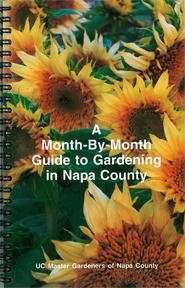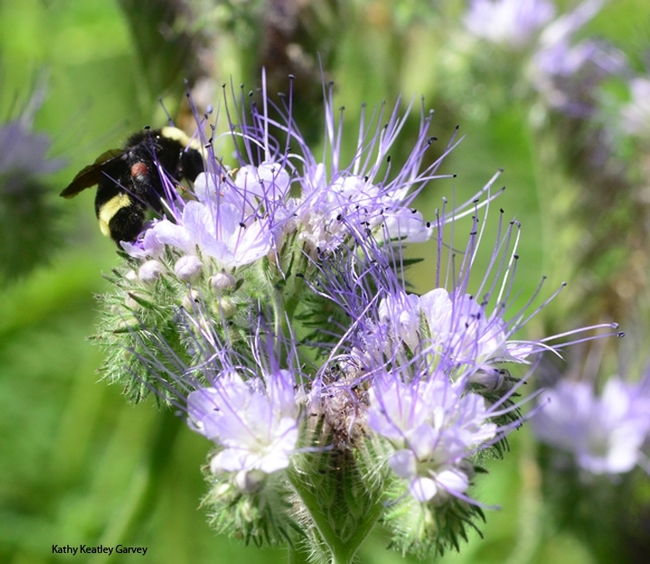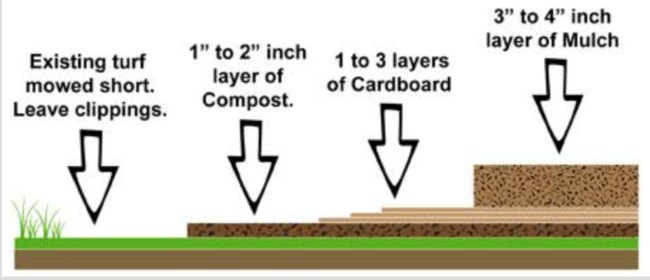By Iris Craig, U. C. Master Gardener of Napa County
January is a month for setting intentions, and many of us set intentions for our gardens. For some of us, the big goal is to be more organized.
How can you improve the organization of your winter garden? One way is to keep a journal. Describe the weather, your maintenance, what you planted and when you harvested. Your journal can include a photo or drawing of the garden for each month. By keeping track of what is going on in your garden, you start to see patterns.
You can also schedule tasks so you complete them at the best time. In most areas of the country, winter is a time when gardens rest. In Napa County, a winter garden can be just as much fun to care for and as productive as in June. Plus, you can turn off the irrigation and allow rain to water the garden for you. Tasks that are best accomplished in winter include replacing your lawn, planting annual flowers for color, planting bare-root trees or shrubs, improving your soil and caring for fruit trees.
Good soil enables plant growth. To preserve your soil structure, refrain from walking on it or tilling it while it is wet.
We can affect climate change through our soil maintenance practices. Soil is an ecosystem itself. It can sequester carbon, making it a carbon reservoir. Over-tilling soil tends to deplete it of organic matter and reduce the ability of plants to absorb water.
To protect and improve your soil, and to sequester carbon, plant a cover crop. Cover crops reduce soil compaction and protect the soil from erosion. They improve soil structure, increase organic matter and fix nitrogen.
Common cover crops include fava beans and other legumes. Legumes add nitrogen, and nitrogen is the main plant nutrient commonly lacking in our soils.
Another good cover crop is lacy phacelia (Phacelia tanacetifolia). It is in the borage family, native to California and grows well. It attracts bees and blooms all winter. Cover crops compete with weeds, often choking them out. However, while the soil is damp, you can easily control weeds by hand.
Should you decide to remove a lawn, now is the ideal time. You can use the lasagna method. Instead of digging out sod, cover it with sheets of cardboard topped with soil and mulch. The rain and soil organisms will do the rest. Within three to four months, you will find rich soil in place of the lawn.
With planning, you can have blooming plants in your garden all year. Choose shrubs that blossom in winter and plant them as soon as the soil is dry enough to work. (It should be crumbly.) Flowers for winter bloom include primroses (Primula vulgarius), violas, Iceland poppies, pot marigolds (Calendula) and sweet William (Dianthus). All will bloom early and tend to last through the rainy season. You can plant them in a container or planter box if the soil is too wet.
If you plan for it in late summer, you can have a winter vegetable garden in Napa County. Suitable vegetables include bok choy, kale, mustard greens and Swiss chard, as well as broccoli and cauliflower. You can also plant root vegetables in early fall for winter harvest; consider beets, carrots, turnips, kohlrabi and radishes.
If you missed this window, begin planning your spring garden. You can start many leafy spring vegetables from seed now and transplant the seedlings into the garden in early to mid-March. Most root vegetables should be sown directly in planting beds.
If you have frost-sensitive plants, such as citrus trees, or want to get a head start on your spring vegetable garden, protect your garden from frost with burlap or floating row cover. Create a frame with plastic tubing to drape the fabric and prevent it from touching plants. Anchor the fabric to the ground to keep out snails and birds. Remove burlap every morning so the plants can receive sun during the day. You can leave floating row cover in place; it warms the soil on sunny days.
To get more organized in your garden, consult the Master Gardeners publication, “A Month-by-Month Guide to Gardening in Napa County.” It makes gardening recommendations for each month and includes a section where you can record important information. The publication is available for purchase in the Master Gardener office (address below).
Next workshop: “Flowers and Foliage for the House, growing Flowers for Bouquets” on Saturday, April 27, from 9:30 to 11:30 a.m., at the University of California Cooperative Extension, 1710 Soscol Avenue, Napa. For more details & online Registration go to http://napamg.ucanr.edu or call 707-253-4221
The UC Master Gardeners of Napa County are volunteers who provide UC research-based information on home gardening and answer your questions. To find out more about upcoming programs or to ask a garden question, visit the Master Gardener website (http://napamg.ucanr.edu) or call (707) 253-4221 between 9 a.m. and noon on Mondays, Wednesdays or Fridays.
Attached Images:


